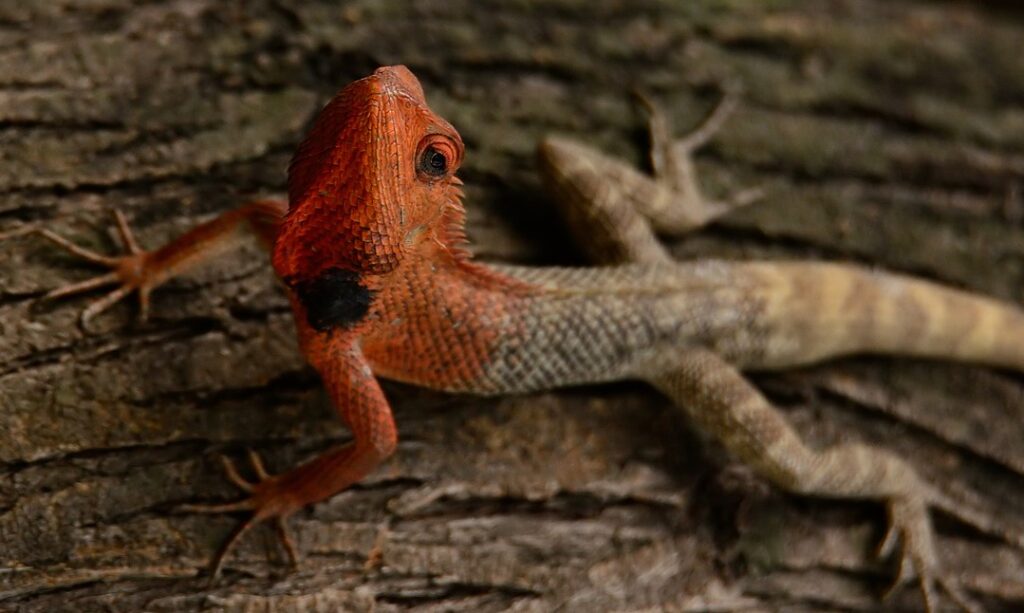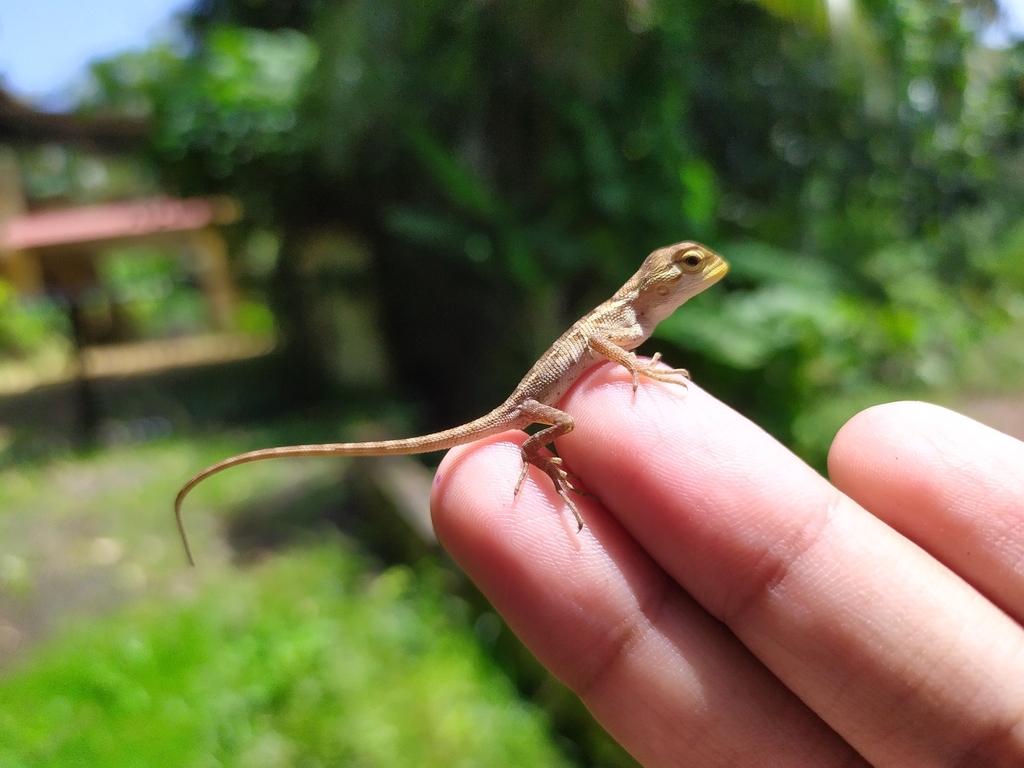Oriental garden lizard
Calotes versicolor

It is called a bloodsucker lizard, and moves its eyes like a chameleon!
The oriental garden lizard has a long tail, spines along its back and sharp claws that help it climb trees. During mating season, the male oriental garden lizard becomes extra colourful, and the colours can vary greatly between different specimens. Under the chin, the lizard has a flap of skin that can be a beautiful red. This has led to it sometimes being called “the bloodsucker lizard” in English, because it looks like it has a chin full of blood. Just like chameleons, the oriental garden lizard can move its eyes independently!

Photo: Pkspks-CC-BY-SA
One of the world’s most widespread lizard species
In addition to the geckos, the oriental garden lizard is one of the world’s most widespread species of lizards. On the one hand, it has a large, natural, distribution. The area stretches from the Middle East to South-east Asia. But the oriental garden lizard has also been spread by humans to even more places – where the species does not usually belong. In the Seychelles, Borneo and Florida, for example, there are now oriental garden lizards, and the lizard is considered very invasive there. This means that it has been moved to a new area, where it causes major problems – such as competition for food or space with species that naturally live in the new area.
The Oriental garden lizard easily adapts to human environments.
Photo: CheongWeei-Gan-CC-BY
The Oriental garden lizard can display various bright colors but can also be light beige, gray, or brown-colored.
Photo: Rushen-CC-BY-SA
Can store eggs and sperm in the body for months
The oriental garden lizard can eat many different kinds of food and live in many different environments. This makes it particularly dangerous as an invasive species. It reaches sexual maturity after one year, and can reproduce several times a year. In addition, the female can store sperm – or fertilised eggs – inside her body for several months. Then she can choose to let her eggs be fertilised and lay her eggs, when conditions are most optimal. If it then arrives to a new area, a single female can lay the foundation for a whole new population of oriental garden lizards – without being accompanied by a male.

Photo: Christopher-CC-BY
Distribution worldwide
Southern parts of Asia, from Iran and Afghanistan to Thailand, Vietnam and Indonesia.

Threat based on the Red List

Trade regulations
CITES: Not listed.